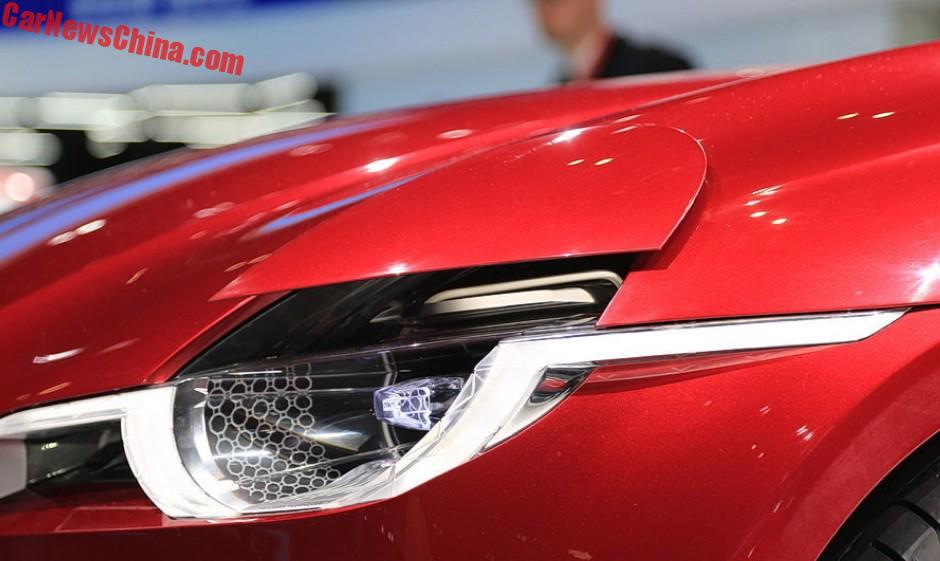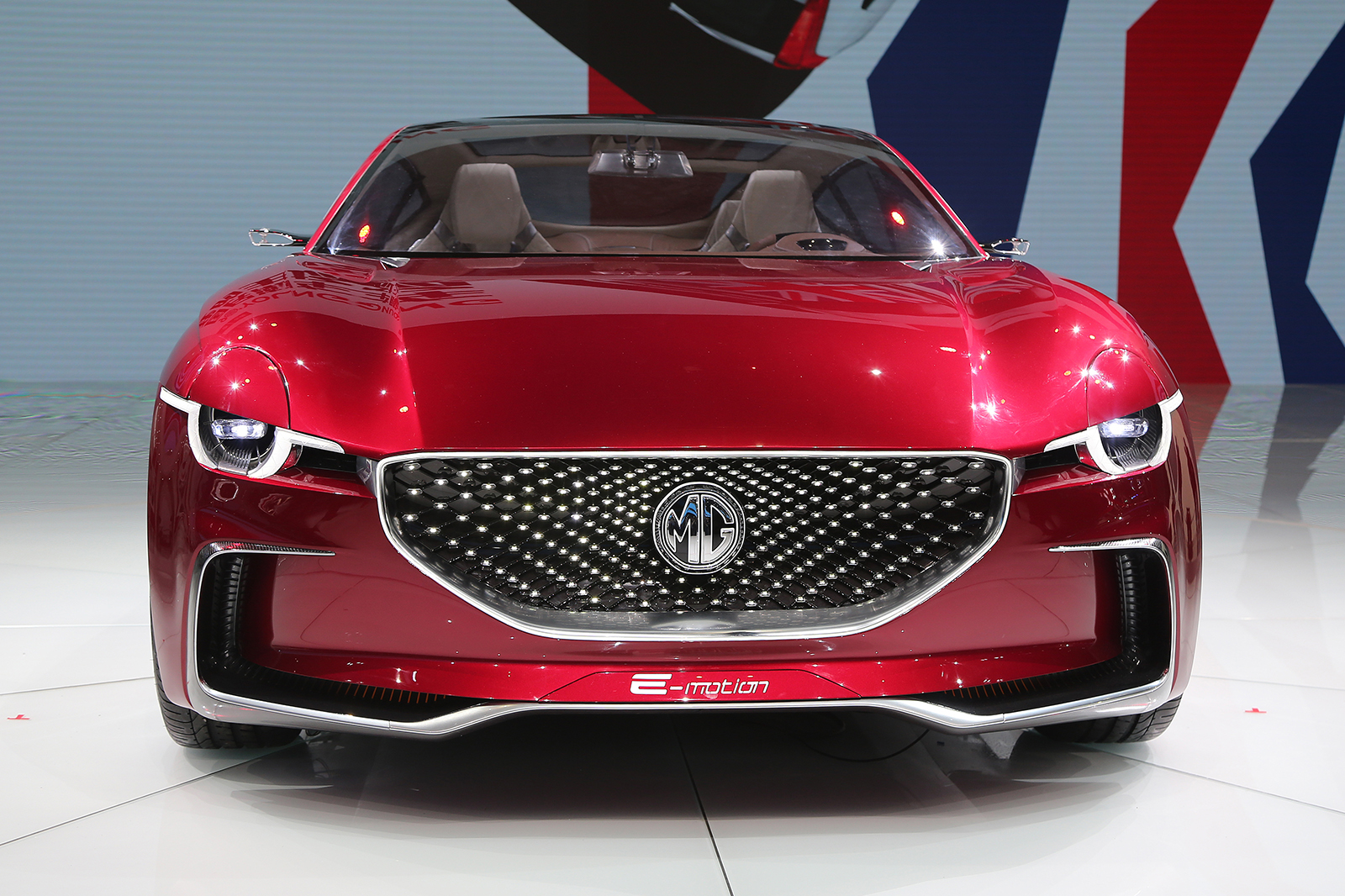Just noticed this on the MG coupe concept



Just noticed this on the MG coupe concept



Can’t imagine that those sharp front corners would make it onto the road legally. Proper leg slicer in a pedestrian impact.
They could make them so at the slightest touch they retract or fall off. (think winged lady on an RR)
Hang on a minute, stuff falls off MG’s anyway.
Depends what they are made from, how the lids are attached. Note, its only a lid that moves, not the headlamp unit. With the Mk1, you might not be aware, but the issue is not where the lid will slice off someone’s legs (no more likely than the bonnet edge), but the very substantial mass of the headamp bowl and support framing.
Kind of the reverse to the Alfa Romeo Montreal, where the headlamp cover moved down to reveal the headlamp.
I always loved the Panther Solo’s rotating units. No animation available sadly, but you can see open and closed shots here.
You could maybe get away with those, but don’t lights have to be unblocked at all times now too - hence the Mk 2 BMW Mini not having the lights in the bonnet.
I understand pop up headlights are now banned on new cars due to pedestrian injury concerns so it’s unlikely.
(In Europe that is)
They are not banned, but just extremely difficult to engineer to comply with regulations. During the NC development, I spoke with Mazda engineers who were toying with the idea of a XJ220 type solution. They could make it work, but the cost was proghibitive, for a car they viewed had a declining parket.
I think Mazda are missing a trick here. The pop ups could be activated in the event of a frontal strike,preventing a pedestrian from making contact with the bonnet. Has to be a better solution than the expensive bonnet lifters on the later models
The pedestrian might even end up on their feet,therefore not sustaining any serious injuries
Judging by the horrendous repair costs of the current ND’s “explosive bonnets” I’d have thought adding any other complex technology would be a very bad idea.
Just think…an 8 years old ND say in 4 years time gets a slight front ding. Car estimated value X amount. Bits to repair…xxx amount.
Scrap.
I had similar concerns, which I aired in a post in another thread a few months ago - basically that any active bonnet-equipped MX-5, if suffering front end damage, is likely to be regarded a worthless write-off by insurance companies when they get to the 8 to 10 year-old mark. Such a shame that a device aimed at meeting crash regulations could cause premature scrapping of an otherwise perfectly repairable and usable car.
But then the cynical conspiracy theorist in me wonders if this might just be a devious ploy by manufacturers and governments to prevent owners from keeping their cars too long - indirectly forcing them to buy new, to keep the car industry going. I wonder if in the future we will ever see late model NCs and NDs reaching the ripe old age of 30, as early NAs currently are.
Maybe not an outright ban as it were but if a manufacturer cannot make a car with stuff that sticks up out of the front of the car and get it homologated then it amounts to the same thing. It was the change in legislation that saw them disappear.
It is all part of planned obsolescence. Annual model variations “improvements” etc were initially introduced to persuade the “must have it” “Early Adopters” to replace their cars more often than necessary.
Modern design tech allows the manufacturer to program how soon the car disintegrates somewhere so it’s then uneconomic to repair (usually around or near suspension mounting points), but before it begins looking a heap. Life varies depending on care and usage, but not many cars make it to fifteen while most pass eight.
I expect the designers can shift the mid point on the life-time bell curve simply by specifying things like metal thickness or paint thickness etc.
They could make them so at the slightest touch they retract or fall off. (think winged lady on an RR)
Hang on a minute, stuff falls off MG’s anyway.
Not all new cars have active bonnets; these are only used in cars where the manufacturer is unable to achieve the necessary clearance. If these cars are being crashed all the time, then the cost of parts might come down. But on the otherhand, the NE MX5, if it does occur, won’t have a big engine under the bonnet, so the problem goes away (ie. the bonnet has sufficient clearance to achieve compliance)
Only Europe, Australia and Japan market cars have the active bonnet. Its not required in the US/ Canada, so is not fitted. If it was some sort of secretive collaboration of “government” and “corporations” to rob us, then wouldn’t also Canadians and Americans be part of that equation.
The clearance requirements have come about because of sound scientific evidence. They are not fitted in the US due to much greater influence from industry lobbyists who push ack on government regulation that might reduce profits. Canada was obliged to follow/ mirror standards due to NAFTA/NAFTA2.
Mazda is incapable of properly engineering a system applicable to the real world (other car makers can). But they are probably not interested, because the MX5 is no longer important in sales, and the ND version might have a relatively short future.
Programmed suspension destruction; sounds like nonsense. It implys that a mistake in the programming can kill the driver (suspension mounting points disintegrate while on a 180kph charge down the autobahn).
The average age of a passenger car in the EU is 11.1 years (source: European Automobile Manufacturers Association). In the US, arguably a more consumerist society, the average age of a car is 11.8 years. So the idea that most cars are 8 years old when scrapped is clearly wrong. What’s more, all studies indicate that the average age is increasing, so cars are lasting longer.
What is interesting in the US stats is that it is frequently stated that the US practices a comparatively low standard of annual inspection compared to most European countries. But, with apparently stricter standards, EU cars are only being taken off the roads a few months earlier than in the US. The difference might be explained by the fact that US cars tend to be of a larger, more rugged design (base cars have a 2-2.5 liter engine, not 1.0-1.2). New Jersey used to practice an inspection comparable to the UK MOT. They conducted a study which showed that State inspections had no impact on the safety of the fleet, as safety defects were invariably detected during routine servicing. So Inspections were little more than an unecessary expense on the motorist, effectively an undemocratic tax. So they were scrapped, and laws enforcing owner responsibility on overall car condition were tightened up.Its true that in this country, there is a type of irresponsible owner who tries to game the MOT system, and conducts practically no maintenance. Any owner turning up to a MOT with bald tyres is guilty of this.
Vintage footage reminds us how long cars lasted for in the past:
https://www.youtube.com/watch?v=nuwTWujeMM0
20,000 miles out of the big end…
Programmed suspension destruction; sounds like nonsense. It implys that a mistake in the programming can kill the driver (suspension mounting points disintegrate while on a 180kph charge down the autobahn).
The average age of a passenger car in the EU is 11.1 years (source: European Automobile Manufacturers Association). In the US, arguably a more consumerist society, the average age of a car is 11.8 years. So the idea that most cars are 8 years old when scrapped is clearly wrong. What’s more, all studies indicate that the average age is increasing, so cars are lasting longer.
Deliberate rust points exist.
I have a lot of experience of being an impoverished car owner nursing old bangers through MOTs long after they should have been scrapped. In 1996 when looking at the market to buy only my second brand new car I specifically chose not to buy an Audi A4 because of the stupidly obvious but cunningly awkward rust trap at the top of the rear struts and the loosely fitted rear arch liner that was also going to collect salty mud behind it. They changed it all later to a much stronger design. I used to have pictures from my market research at the time as ammunition when quizzing the various dealers for my six short-listed makes, but the relevant pics were lost when that PC was struck by lightning (dial-up modem).
I also said that ‘not many cars make it to fifteen while most pass eight’. Bell curve centre there is about eleven to twelve years, agreeing with your figures.
del.